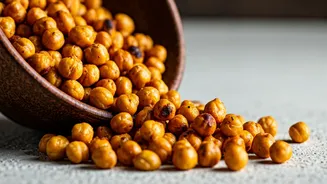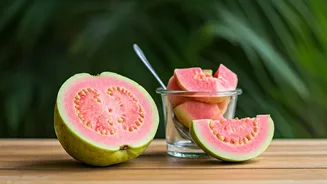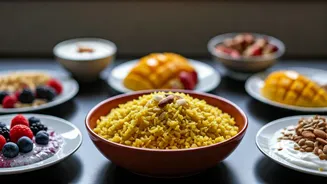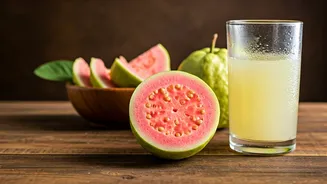Nutritional Powerhouse
Roasted chickpeas are often touted for their impressive nutritional profile, packed with protein and fiber. These components contribute to feelings of fullness
and can aid in weight management. A standard serving contains a good amount of protein, essential for muscle repair and growth, and is also a source of dietary fiber, promoting healthy digestion and regularity. They also boast important minerals, including iron, which helps in carrying oxygen throughout the body, and magnesium, which supports various bodily functions. This nutritional combination makes roasted chickpeas a potentially beneficial snack, fitting well into various dietary patterns. However, mindful consumption is key, as the preparation method and added ingredients can influence their overall health impact.
The Roasting Process
The way chickpeas are roasted greatly influences their nutritional value. Roasting typically involves a high-heat cooking process that can alter the food's composition. While roasting enhances the crunchy texture and appealing flavor, it's vital to consider the additions made during roasting. Common ingredients include oil, salt, and various seasonings, which significantly affect the final nutritional content. Some roasting methods may involve excessive oil, which increases the calorie and fat content. Furthermore, the high temperatures can lead to the formation of compounds that might be harmful in large quantities. Therefore, choosing preparation methods that use minimal oil and focusing on natural seasonings is often recommended by dietitians. Checking labels and being mindful of the ingredients used are key to making a healthy choice.
Mindful Consumption
Dietitians often emphasize mindful consumption when it comes to roasted chickpeas. This means paying attention not only to what you eat but also how much. Because they can be calorie-dense, portion control is crucial. A small serving can be satisfying and provide valuable nutrients, while overeating can contribute to excess calorie intake. Another aspect of mindful eating is being aware of the added ingredients and their nutritional impact. Reading food labels to check the amounts of salt, oil, and sugars is a proactive step. Dietitians frequently advise pairing roasted chickpeas with other healthy foods, such as vegetables or fruits, to balance the meal and provide a wider range of nutrients. Listening to your body's signals of hunger and fullness also plays a vital role in mindful consumption.
Hidden Sodium Levels
One significant concern for dietitians is the often-high sodium content found in roasted chickpeas. Salt enhances flavor, making the snack appealing, but excessive sodium can negatively impact health. High sodium intake is closely associated with elevated blood pressure, which increases the risk of heart disease and stroke. Many commercially prepared roasted chickpeas are heavily salted during the roasting process, and the sodium content can quickly add up in a serving. For individuals with existing hypertension or those aiming to limit their sodium consumption, reading the nutrition labels and choosing low-sodium options are crucial steps. You could also opt to prepare roasted chickpeas at home, which gives you greater control over the salt added, allowing for healthier, customized versions. Consider alternatives like herbs and spices to flavor your chickpeas.
Alternative Preparations
Exploring alternative preparations is a good way to enjoy chickpeas while managing your health. Instead of roasting, you can consider boiling or steaming chickpeas. These methods preserve more nutrients and reduce the need for added fats and salts. Boiling chickpeas provides a tender texture suitable for adding to salads or creating dips. Steaming is a quick and effective cooking method, maintaining a natural flavor. Another alternative is to lightly air-fry the chickpeas. This approach uses less oil compared to traditional roasting while providing a satisfying crunch. Seasoning chickpeas with a variety of herbs, spices, and a touch of lemon juice will enhance the flavor profile without adding extra sodium or unhealthy fats. Preparing chickpeas at home gives you more control over the ingredients and lets you create healthier, more personalized snacks.
Integration into Diet
Roasted chickpeas can easily fit into a balanced diet when consumed mindfully. They can be a part of a well-rounded meal plan or can serve as a protein-rich snack. When incorporating roasted chickpeas, aim to pair them with other nutrient-dense foods to increase your nutrient intake. They make a great addition to salads, offering texture and protein. Roasted chickpeas can also be added to soups or stews for added flavor and substance. Planning your meals and snacks can help ensure that you eat them in moderation. Consider portioning roasted chickpeas into smaller servings to limit overeating. Dietitians suggest using them as a substitute for less nutritious snacks, like chips or crackers, to boost the overall nutritional value of your food. By being thoughtful about how you include roasted chickpeas in your meals, you can take advantage of their nutritional benefits.












